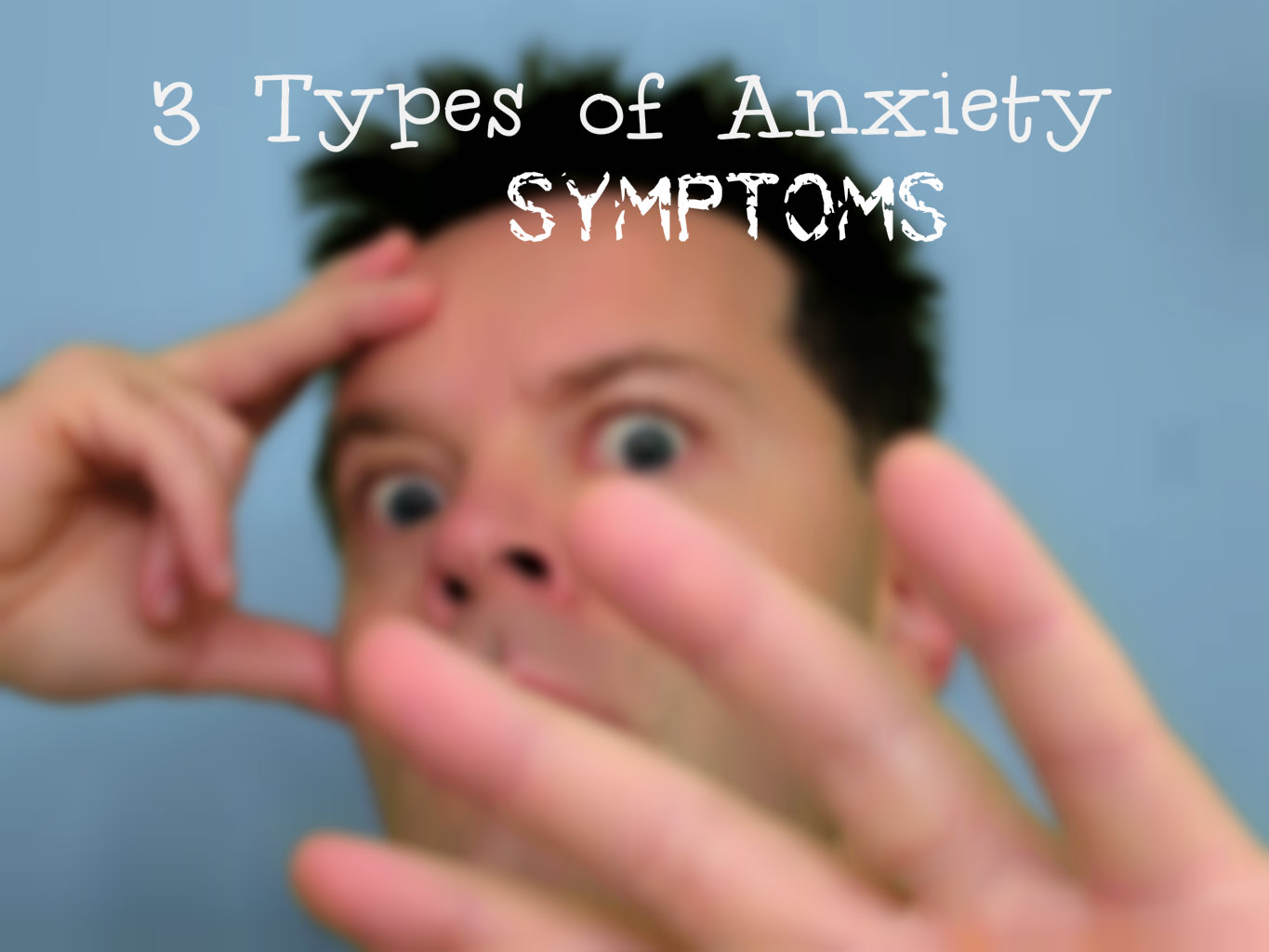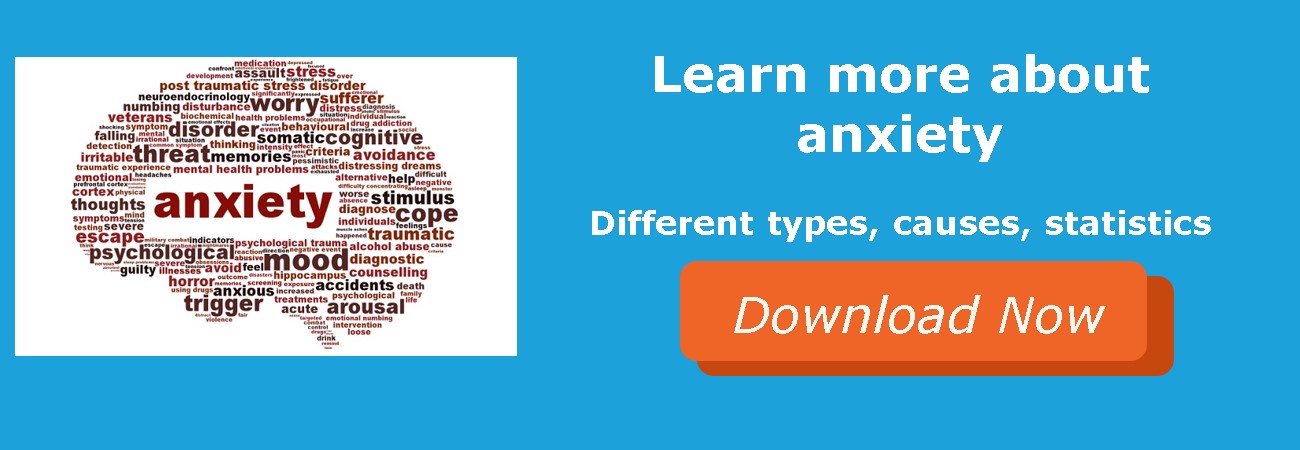3 Types of Anxiety Symptoms
3 Types of Anxiety Symptoms
There are not many good things about feeling anxious as it generally creates lots of physical anxiety symptoms that cause us much discomfort. Although we may prefer to feel happy; calm, or relaxed, as uncomfortable as anxiety is, anxiety plays a very important role and needs to be uncomfortable in order to give us the push we need to respond to whatever it is our body, mind and/or spirit is not liking about a particular situation.

Anxiety is a direct and immediate feeling that we experience in the face of a threat and is often referred to as the body’s “alarm” response. The good thing about our alarm response, is that there is no doubt it is occurring and your body gives you immediate feedback about what’s happening to you signalling dislike or concern.
Believe it or not, it is actually a helpful system designed to keep us safe. However, anxiety can become problematic when we start to have irrational fears and fear things that aren’t actually dangerous to our survival – like talking to people! How can talking to people put our life in danger? Yet, for some people experiencing social anxiety – this happens!
So how do you tell if you are suffering with anxiety? There are three types of anxiety symptoms to look for – emotional, physical, and behavioural. This blog takes a look at these here.
1) Emotional Anxiety Symptoms
People suffering with anxiety often describe feeling:
- Afraid
- Anxious
- Nervous
- On edge
- Terrified
- Stressed
- Uptight
- Panicked
- Scared
2) Physical Anxiety Symptoms
Common physical symptoms that people with anxiety report to me in my work are:
- Racing heart
- Breathlessness
- Tight chest
- Nausea
- Shaky and/or sweaty
These symptoms can escalate into extreme levels if not addressed for some people, which can leave them thinking they may be having a heart attack. This is an intense experience of anxiety known as a panic attack or anxiety attack, but often these don’t last too long.
If these are symptoms you notice then there is a pretty good chance it is your body trying to let you know it is not happy about something happening to you or something that has happened to you and it does not want it to happen again. It’s actually very helpful and if we connect with our body and respond by naming the anxiety and then finding out what it is we can do to settle these feelings then they will naturally subside without escalating. This may mean developing plans and skills to help the body settle, but either way responding rather than ignoring your body will always empower you to have the outcome you are hoping for.
3) Behavioural Anxiety Symptoms
Our behaviour can also indicate that we may have anxiety and the key to look for is either fight behaviour [getting angry], or flight behaviour [running away or avoidance]. If you notice that you are intentionally trying to avoid something – it may be a place, a person, or situation – then this is a sure sign that whatever you are avoiding is because it is the trigger of your anxiety!
Examples of this are not answering the telephone because it makes you feel anxious talking to people. Or avoiding shopping centres out of fear you might have a panic attack. You might avoid a particular street or place because that’s where you had that frightening car accident.
Although avoiding our anxiety triggers provides short term relief from our anxiety, long-term avoidance can be problematic and lead to more and more restrictions on your life. Because anxiety can become so life-limiting, often this can lead to developing depression.
So… If after reading through this, you can identify with some of these symptoms of anxiety, then a good place to start next is to know your anxiety better. There are six types of anxiety disorders and you can learn more about these, and their causes in our free infographic on Anxiety Disorders, downloadable here.
THREE CONVENIENT LOCATIONS
MOUNT GRAVATT
Mt Gravatt Medical PrecinctSE 105, 1808 Logan Rd
Upper Mount Gravatt QLD 4122



